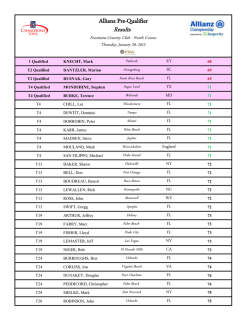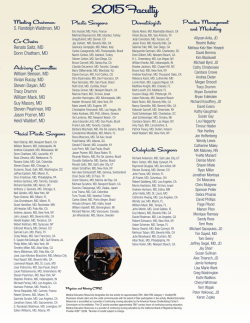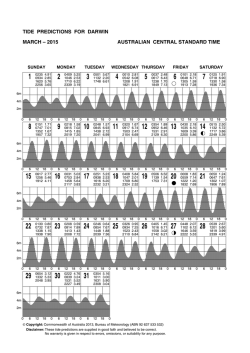
RHYTHMIC BEACH CUSP FORMATION: A CONCEPTUAL
Marine Geology, 65 (1985) 289-304
Elsevier Science Publishers B.V., Amsterdam- Printed in The Netherlands
289
RHYTHMIC BEACH CUSP FORMATION: A CONCEPTUAL SYNTHESIS*
RICHARD J. SEYMOUR and DAVID G. AUBREY
Institute of Marine Resources, Scripps Institution of Oceanography, La Jolla, CA 92093
(U.S.A.)
Woods Hole Oceanographic Institution, Woods Hole, MA 02543 (U.S.A.)
(Received June 8, 1984; revised and acc~pted December 3, 1984)
ABSTRACT
Seymour, R.J. and Aubrey, D.G., 1985. Rhythmic beach cusp formation: A conceptual
synthesis. Mar. Geol., 65: 289-304.
Observations of a sandy beach at Santa Barbara, California, during February 1980
documented the sequence of beach cusp formation, replacement by a second set of
rhythmic cusps obliterating the first set, and finally complete planation of all rhythmic
cusps during a major storm. Although neither cusp-building event was observed during
its initiation, the wave and tide conditions during formation were well documented by
in-situ instrumentation. Based on these field observations and those by other investigators, a coherent conceptual theory of beach cusp formation is proposed, including formative, maintenance and destructive phases. This theory proposes rhythmic cusp
formation during relative stillstands of sea level of sufficient duration to permit initial
perturbation of beach geometry; regularly spaced cusps acquire their initial spacing from
subharmonic edge waves (such that spacing derives from the incident wave period);
growth of the initial perturbation continues until cusps reach a limiting value, not
necessarily with continuation of edge wave motion; the cusp spacing persists until a
change in wave conditions either destroys the cusps, or establishes a radically different
spacing; and finally, that large storms will destroy the rhythmic cusp field, leaving either
a planar beach or a beach with arhythmic cusp-like features.
INTRODUCTION
Rhythmic shoreline features have long been of interest to coastal
geologists, geographers, and engineers. From the first descriptions of beach
cusps (Palmer, 1834), there have been apparently contradictory observations and theories of rhythmic morphological development, particularly
for beach cusps which are observed only after formation, and which are
relatively ephemeral. The practical importance of these features is multifold, with perhaps one of the most exciting aspects being their possible
response to trapped wave motions which dominate surf zone processes under
certain conditions of beach slope and wave form. Since direct observation
of these trapped waves is difficult, the indirect expressions perhaps left by
them take on added importance.
*Woods Hole Oceanographic Institution Contribution No. 5627.
0025-3227/85/$03.30
© 1985 Elsevier Science Publishers B.V.
290
(~)
POINT
· : ·. CONCEPTION
::.:~-........=::.::::·.:. ~--~~~
Fig.l. Location of Santa Barbara, California, relative to Point Conception headland and
the offshore islands.
The authors had an opportunity to observe the formation of a series of
beach cusps during a field experiment in January and February of 1980
(Fig.1 ). These rhythmic beach cusps were generated on a field of preexisting cusps, which were subsequently obliterated. The new set of cusps
were then destroyed during a major storm, with a 50-100 year recurrence
interval (Fig.2). These observations, combined with accurate measurements
of the forcing conditions, provoked us to synthesize ideas of rhythmic beach
cusp generation using other investigators' observations as well.
The literature on beachface cusp formation is vast, and a substantial lack
of consensus still exists on the causative mechanisms and the limiting conditions for existence. The phenomenon considered here excludes mobile bed
forms that involve longshore transport, such as the sand waves described in
Hom-rna and Sonu (1963), Sonu (1968,:1973), and Schwartz (1972). It also
excludes giant cusps of the type described in Komar (1971), as well as cusplike forms caused by storm erosion on an accreted beach (Evans, 1938,
type 1; Williams, 1973, storm cusps). It is restricted to rhythmic features
that form at the upper portion of the swash zone with wavelengths of tens
of centimeters to tens of meters.
A more thorough review of the literature (see Guza and Inman, 1975;
or Ballenger, 1979) points out an obvious conflict between and amongobservationalists and theoreticians. Some of the more pertinent differences
are discussed here. (We do not present an exhaustive review.)
Shepard (193.5) observ.es that gravel cusps are more persistent during
intervals of neap tides, implying that they are destroyed by large tide ranges.
Schupp (1953) discusses accretional cobble beach cusps in southern
California, and verifies the tendency for gravel cusps to form during neap
tides, and to disintegrate during spring tides. Otvos (1964) contends that
""co
t-'
Fig.2. Leadbetter Beach, S anta Barbara, Cal ifornia, during the storm of 16-21 F ebruary, 1980. The NSTS experim ent area was seaward
of the athletic field in th e left foreground (photograph by M.P. Clark).
r-
292
tide stages are not important in forming fine sand cusps and pebbly-coarse
sand cusps. At Otvos' field site (Westbrook, Connecticut), spring/neap tidal
range ratio is 1.35, with a spring range of 1.4 m. Longuet-Higgins and Parkin
(1962; hereafter referred to as LHP) observe two sets of cusps, one at the
high-tide swash and one at the low-tide swash, even with a tide range of 4 m.
'This discrepancy can be alleviated on the following basis. Shepard's observations showed that when incident waves were not so large as to destroy the
cusps, cusps formed most readily and survived to the greatest extent when
the tides were both diurnal and in the neap phase. A careful reading of
Otvos shows that he was referring only to cusps formed in coarse sand and
pebbles when he dismissed the tide stages. Later in his paper he indicates
that cusps formed on the fine sand beaches in his study area only when the
high-tide level remained nearly stationary for 30-45 miri. LHP investigated
very steep shingle beaches with grain sizes in the pebble to cobble range.
At these sites, cusps formed in a matter of minutes at each stillstand and
were eliminated practically without trace by the following tide cycle. Tide
tables for the April 1956 LHP observations show two highs only about
10 em different in elevation and about two hours apart during the obvious
daylight cusp-building event. The long high-tide duration is a regional
anomaly. If the time required for the cusp to grow to its limit (or equilibrium) steepness is less than the stillstand interval, then tide ranges are
unlikely to influence the formation of the cusps. Conversely, if the growth
time is large compared to a stillstand, the smearing effect of changing sea
level could inhibit cusp formation. Clearly, neap tides will provide more
slowly changing sea levels at the high than will springs, and diurnal tides
more than semi-diurnal. Large tidal ranges will tend to smear or destroy
beach cusps formed during low-water stillstands.
Many other investigators have observed multiple co-existing sets of beach
cusps, all at different levels. Russell and Mcintire (1965) observed two and
three sets of cusps on various occasions, at distinct levels of the beach.
Williams (1973) observed three rows of cusps on Hong Kong beaches, with
the highest level coinciding with the higher high-water position, the middle
set coinciding with the high-tide position, and the bottom level marking the
lower low-water position. Stillstand of sea level was mentioned as a factor
favoring cusp formation.
A host of investigators (including Galvin, 1965; Bowen and Inman, 1969;
Sallenger, 1979; Guza and Bowen, 1981; and Inman and Guza, 1982)
provide theoretical and observational evidence for edge waves as the triggering mechanism for cusps, providing the template for cusp spacing and
location.
The longshore wavelength, Le, and period, Te, of edge waves' on a plane
beach are related (Eckart, 1951):
L
e
= !_
2rr
r; (2n + 1) tan i3
(1)
-,
where g is the acceleration of gravity, n is the mode number, and i3 is the
beach slope. The most easily excited edge wave, the lowest mode (n = 0)
293
is a subharmonic with a period twice that of the incident wave period
(Guza: and Inman, 1975 ). Cusp wavelength is hypothesized to be euqal
to one-half the wavelength of a subharmonic edge wave (A.c = Lc/2). Thus,
'the wavelength of the beach cusp can be expressed as (Inman and Guza,
1982):
A.
c
= L e =!_ Tf
2
1r
tan {3
(2)
for the subharmonic case. Ball (1967) derives an analytic solution for edge
waves on non-planar beaches, while Munk et al. (1964) and Holman and
Bowen (1979) provide numerical schemes for finding the edge wave dispersion relation [analogous to eqn. (1)] for arbitrary cross-shore beach configuration. Kuenen (1948), Otvos (1964) and Schwartz (1972), among
others, present arguments, unsupported by data, that higher waves result in
larger cusp spacing. Dalrymple and Lanan (1976) postulate that this large
wave/large cusp spacing may be related to the observation that the higher
the wave, the longer its wavelength. LHP and Dean and Maurmeyer (1981;
hereafter referred to as DM) show a correlation between swash excursion
and cusp spacing. Many other theories of formation exist, emphasizing the
influence of topography on cusp formation (Otvos, 1964; Williams, 1973;
Dubois, 1978; Sallenger, 1979); and the role of incident waves and swash
(Longuet-Higgins and Parkin, 1962; Dalrymple and Lanan, 1976). In
particular, observations show a relationship between accretionary cycles of
beaches and formation of beach cusps, particularly in association with a
beach ridge on berm (Evans, 1938; Otvos, 1964; Williams, 1973; Dubois,
1978; Sallenger, 1979). Except for possibly the edge wave theory, none of
these theories adequately explains the rhythmic nature of beach cusps. Since
few investigators observed cusp formation while documenting wave condi·
tions, the linkage between cusps and incident waves is weak.
The LHP study attempted to discern correlations between swash spacing
and the predicted wavelengths of edge waves at one of their sites (Tide Mill)
but found none. The assumption was that each observation constituted a
unique cusp-building event. In the light of observations by Evans (1938)
and Sallenger (1979) that subtle perturbations of the beachface can serve as
a template for cusp spacing, the insignificant-seeming remnants of the
previous cycles may have set the cusp wavelength for later episodes. This
argument is supported by LHP data from 23 and 24 April when cusp spacing
remained identical for two days, even though swash excursion varied. A
similar event occurred at the second LHP site (Chesil Bank). On 21, 22 and
23 June, cusp spacing varied over only 15% of the mean length while swash
excursion varied by a factor of almost 3.
The DM study involved a single observation of a cusp-building event.
Wave period was estimated from visual observations of wave breaking and
therefore position of breaking (few studies have measured pertinent wave
parameters with accurate wave gages). Subharmonic edgewave prediction of
cusp spacing obtained with this period estimate disagreed with the measured
mean spacing by 30%. As pointed out in Inman and Guza (1982; hereafter
294
called IG), an error of only 15% in estimating the period would result in a
match between the wavelengths. Further, DM assumed that the wave period
observed after the cusps were well-formed represented the candidate period
for testing edge wave generation mechanisms. Evans (1938) observed waves
acting on cusps when those waves were " ... totally unrelated to their
process of formation. This is very likely to be misleading to the investigator
who starts with a finished series of cusps and who may be led to a deductive
explanation because of the great difficulty of making direct observations
during their growth".
The single observation of the DM study does not appear to rule out edge
waves as a source mechanism. The LHP results cast serious doubts that the
waves observed were responsible for cusp spacing. But the cusps were presumably initiated by some set of waves. During the Chesil Bank experiment,
observed wave periods ranged from 5 to 7 s. Beach slopes ranged from 0.09
to 0.2. Cusp spacings were 3.7-10 m. For the five observations in June,
predicted minimum cusp spacing from an edge wave source is at least twice
too large, based on wave periods existing at the time of cusp measurement.
Noting that all of these observations were made at high tide, tide tables for
those dates show that the daylight highs occurred between 1:30 and 5:45
p.m., appropriate for high-frequency waves locally generated by landward
winds over the Atlantic. A reduction of the period by only 30% during the
early morning (sea-breeze dominated) high would allow any of these events
to serve as the template of cusp building for all following observations.
During the four observations in July, edge wave theory provides reasonable
estimates (within 15-30%) of the cusp spacing using wave periods measured
at the time of the observation.
The DM study also develops a simple model of water particle excursion
over the cusp geometry which predicts cusp spacing as a function of swash
period, and therefore the maximum swash excursion. This relationship agrees
reasonably with their field observations and with those of LHP. DM claim
that this correlation between swash amplitude and cusp spacing supports
this mechanism as the one governing cusp formation. They offer t:J.O justifiCation for this beyond rejecting edge waves as the probable cause; nor do they
treat the inconsistency in their predictive relationship which would yield a
near zero cusp spacing at initation from a plane beach when cusp relief is
small. The DM mechanism envisions accretion on the horns and erosion in
the bays and a tendency to reinforce existing cusp topography. This is in
good agreement with the reasoning of IG. However, an initial rhythmic disturbance is required by IG to predispose the beach face towards cusp formation. IG favors edge waves as this mechanism, but allows for other causes.
The DM theory does not discuss how cusp growth is limited. IG presents
a relationship for a limiting height to length ratio for cusps which agrees
reasonably well with observed data.
Observations of Evans (1945), Short (1979) and Ballenger (1979) present
convincing evidence that, under conditions of an initially planar beach and
low, surging breakers, the rhythmical variation in swash set up by subhar-
295
I
monic edge waves is a likely mechanism for establishing regular cusp spacing.
Any positive reinforcement theory on a planar beach with random perturbations cannot lead to regular spacing without prolonged competition
between neighboring sites. It does not seem possible that such a nondeterministic scheme could produce Evans~ observation of a perfect set of
cusps generated in less tban two minutes from a planar beach. The only
mechanism yet proposed for initiating cusps that will rapidly produce
regular spacing from a planar beach is edge wave theory.
However, the observed correlation between swash excursion and cusp
spacing must be explained. LHP merely notes the correlation and DM
assumes from the observation that swash determines cusp spacing. It seems
equally likely that the inverse is true, or that the correlation is fortuitous.
Neither LHP nor DM cite any direct evidence showing a change in cusp
spacing that occurs in response to a change in swash height. The LHP data,
however, include two series in which cusp spacing remains fixed although
swash height varies significantly.
As previously noted, there are a number of anecdotal observations that
big waves result in large cusp spacing. Given that cusps form only when
incident waves are less than a critical value of steepness, large cusp-building
waves necessarily imply long periods. Long-period waves drive, in turn,
long-period edge waves and large cusp spacings.
One observed attribute of cusp stability that has produced no disagreement is the tendency for storm waves to destroy cusps and plane off the
beach. No theories have been advanced for this effect. In light of the previous
arguments, it may be instructive to extend them to the case of instability
under storm waves. Assume a set of regularly spaced cusps, built and maintained by low swell. Now introduce storm waves and consider the effects on
the swash. As shown by Guza and Thornton (1982), there will be a substantial increase in energy at frequencies of order 1/10 the breaker frequency,
which will grow with incident wave height. This mismatch in dominant
swash period and excursion (with infragravity wave dominance) can be
expected to erase the cusp field rapidly. As noted by LHP, waves whose
height is too great for the vertical dimensions of the cusps tend to sweep over
the cusp promontories and destroy them.
METHODOLOGY
In January and February of 1980, a major field experiment of the Nearshore Sediment Transport Study (NSTS) was undertaken at Leadbetter
Beach in Santa Barbara, California (Gable, 1981). Leadbetter Beach is a
3 km long sandy beach protected from open ocean waves by the headland
of Point Conception and a string of offshore islands and reefs (Figs.1 and 2),
resulting in a low-to-moderate wave climate throughout most of each year.
Median grain size in Leadbetter Beach is 0.23 mm. As a result of the large
grain size and the wave climate, the foreshore is relatively steep (tan
(3 = 0.38).
296
Gable. (1981) provides an exhaustive description of the experiment site,
the instrumentation and the method other investigators may use to obtain
raw data from the Leadbetter Beach experiment. In addition to the traditional concern for changes to the characteristic nearshore beach-profile
shape, this investigation was directed towards study of its longshore
variability. Therefore, profile measurements were made both parallel and
perpendicular to the shoreline. Subaerial beach and foreshore profiles, in
both directions, were measured with conventional rod-and-level techniques
to a depth of approximately -1 m relative to mean sea level. Five primary
ranges established in the cross-shore direction (Fig.3) were sampled from one
to three times per day during the interval from 27 January to 25 February,
1980. Immediately prior to the experiment (22 January, 1980) and at the
close (25 February, 1983), these five ranges were extended seaward to 15m
depth using a small boat equipped with a sonic depthfinder and an electronic
navigation system. The ranges parallel to shore were measured during most,
but not all, of the experiment period. The area of investigation centered
on a section of beach 2000 m wide extending seaward approximately 600 m
(Fig.3).
Measurements generally followed the methodology described in
Nordstrom and Inman (1975). Details of the NSTS coordinate system and a
schedule of the measurements are contained in Gable (1981). In order to
t
1000
a::
ro
a::
0
:i
800
----<--
0
a:: a
~~
~~
600
<!W
..J(f)•
400
(/)
~ 200
>w
z
0
200
400 MAl NRANGE_lX AXIS l 1000
'200
1400
_J
w
(/) -200
<(
CD
-400
-600
-800
-1000
Fig. 3. Location of beach survey lines at Santa Barbara.
297
assure the highest possible quality, data from the rod-and-level surveys were
entered into a microcomputer in the field immediately following each set of
surveys. The resulting profiles were plotted and compared to earlier results
to highlight anomalous points, allowing for prompt resurveys of any doubtful
points. The profiles were stored on magnetic tape cassettes which were later
archived onto a 9-track tape.
In addition to these data, beach and offshore surveys at approximately
six-week intervals covered the entire length of Leadbetter Beach at coarser
spacing. These were obtained by Robert G. Dean over a period of about 18
months as part of an NSTS experiment to measure longshore transport using
the spit at the eastern end of the beach as a sand trap (Dean et al., 1983).
Two of these broad area surveys, from 21 January and 25 February 1980,
bracketed the month-long field experiment and are included to provide an
overall perspective . of beach changes. Surveying methodology for these
profiles was essentially identical to that described above. Waves were measured by two directional pressure gage arrays (Gable, 1981). Directional wave
spectra were measured four times daily.
RESULTS
Early in the morning of 2 February, 1980, a series of well-defined depositional beachface sand cusps was observed. Measurements showed the cusp
spacing varied by a factor of 3 (approximately 16-48 m). On the previous
day, 1 February, the cusp spacing had been approximately 19m, and much
more regular. The general appearance of the 2 February beach was of superposition of 40 m long cusps on the pre-existing 19-m cusp field. Subsequentially, the cusp spacing changed radically over a few-hour interval. By
5 February the cusp spacing had become regular, averaging about 40 m.
Maximum hom-to-bay elevation difference was about 75 em. These cusps
persisted through February 11, but with diminishing relief. On the 12th
they were diminished further and by the 13th they had been planed away
except for some remnants on the berm above the swash zone.
Cusps were surveyed with transects parallel and perpendicular to the
shoreline each day during the cusp event except for 3, 5 and 10 February.
In the period from 13 to 25 February no new cusps were formed. Initial
and final stages of the cusps along a 100 m length of beach are represented
by profiles from 4 and 13 February, respectively (Fig.4). On 4 February,
the third day of the cusp event, the cusps were well-defined and exhibit the
characteristic deltas at the bases of the valleys, as described in Inman and
Guza (1982). By 11 February, the deltas were no longer discernible. Relief
of the cusp horns was diminished, but their basic .location remained stationary. Two days'later, on 13 February, all cusp features were absent from
the active beachface.
Wave height (Fig.5) in February fluctuated from a mean of about 0.50 m
up to 12 February, to a maximum of about 2 m (with a daily average of
1.5 m). Mean peak period (daily averaged values of modal wave period)
298
(a)
(b)
(c)
Fig.4. Beach cusps at Santa Barbara (a) 4 February, 1980; (b) 11 February; (c)
13 February.
varied from approximately 5 to 18 s. Spring tides occurred in early February
(2m range) and 14-17 February (2.3 m range).
DISCUSSION
Based on previous observations by other investigators and our own
measurements at Santa Barbara, a strong case is made for a coherent theory
of cusp formation and maintenance.that is consistent with the published
literature. The elements of this theory, which is in substantial agreement
with IG, are:
(1) Cusps are formed during relative stillstand of sea level which last
long enough to allow the cusp geometry to reach a stable height. Because of
subsequent erosion during flood tide, the high-tide cusps tend to persist
longer than low-tide cusps. Similarly, spring high-tide cusps persist longer
than neap high-tide cusps.
(2) Regularly spaced cusps acquire their initial spacing from rhythmic
perturbations of the swash produced by subharrhonic edge waves driven by
low steepness waves, most likely exhibiting plunging or surging breaking
behavior. Thus, cusp spacing is determined by the incident wave period.
299
E
~
f-
:r:
150
w
100
J
~
:r:
~
(J)
z
<(
w
::;;:
24
f
w
::;;:
E
~
w
(.!)
z
<(
0::
w
a
f-
\\
8!
z
<(
I
\
16
w
:.:::
<(
w
\
!
of
Q_
Q_
\
50 .i.
'"u""'
"'
.!:!
a
0
0:
\
~
f
0
f
T
"OJ~
100!
f
i
0'
0
4
8
12
16
20
24
DAYS IN FEBRUARY 1980
Fig.5. Wave and tide parameters, Santa Barbara NSTS Experiment.
Beach ridges or berms are not necessary for cusp initiation, although such
beach morphologies will increase the tendency towards formation of depositional cusps.
(3) The initial perturbation grows under the constructive mechanism described in IG and DM until its elevation reaches a limiting value. This limiting
value may not agree with the IG theory. Subsequent beach accretion or
longshore transport may fill in cusp bays (or swales), reducing cusp steepness.
( 4) Once a cusp spacing has been incised into the beach, it will dominate
the mean spacing until a wave event occurs that establishes a radically different spacing, until storm waves destroy the existing system entirely, or
until beach cusps are completely filled in by cross-shore or longshore sand
transport (e.g., Wright et al., 1982). Cusp spacing does not casually adjust
to existing wave conditions.
(5) Storm waves will destroy a cusp field, leaving the beach planar. Only
arhythmic cusp-like erosional morphologies may result from storm waves.
Since the cusp event in early February at Santa Barbara contains creation,
maintenance and destruction elements, it serVes as a test for the coherent
theory described above.
First, the generation process is examined. Stable depositional cusps with
a wavelength of approximately 40 m were formed on a beach with a mean
300
(a)
o~--
(b)
300
200
-
50
I 00
..._
I-
-----100 ________
~
~
;--....
1000
150--;--..._
800
600
400
200
0
Fig.6. (a) Beachface contours, 4 February, 1980, at Leadbetter Beach. Longshore and
cross-shore distances are in decimeters. Elevations contours are in centimeters relative to
MSL with an interval of 25 em. (b) Comparable depth regime on 21 February after the
peak of the storm.
slope of approximately 0.05 (Fig.6a), replacing remnant cusps with 19 m
spacing. Incident wave period during the early morning of 2 February (when
cusps were formed) was about 16 s. Using eqn. (2) to predict cusp spacing
for subharmonic edge waves yields a wavelength of 39.9 m, as compared to
the eventual steady state value of 40 m. Since wave height increased between
the first and the second day of the month and the tide range was decreasing,
one might anticipate that the more closely spaced cusps be superceded by a
new regime. The higher waves would tend to destabilize the existing cusps.
The lower high tide mark would allow edge waves to incise a new template
just below the old cusp location. The supplanting of the 20 m cusps by 40 m
cusps, a rather chaotic process, appeared to proceed from east to west along
the study area. Edge waves, formed by low steepness plunging breakers on
2 February, appear to be the generating mechanism. Since the cusps were
initiated at night, we did not observe the actual initiation process.
The cusps appeared to have reached equilibrium by 4 February. Therefore, their height on this date can be examined with the limit steepness relationship suggested in IG. The Inman-Guza theory predicts that the cusp
height would fall between 26 and 48 em for a cusp spacing of 40 m and a
slope of 0.05. The observed value of about 75 em is significantly higher than
this prediction, and is much steeper than any of the examples presented in
the IG data set.
The next element of the coherent theory that can be explored using the
Santa Barbara cusp event is the maintenance of cusp geometry through varying incident wave conditions. During the period from 2 to 11 February,
301
mean· peak wave period varied between 7 and 19 s. Mean daily significant
wave height ranged between 35 to 7 5 em. Tide range varied from 0.7 to
1.75 m. During 6 February, a short episode of locally generated storm waves
developed, as evidenced by a drop in the period of peak energy from 12 to
7 s (Fig.5 ). This caused a slight erosional trend on the beachface, and
reduced the elevation of the cusps by less than 20 em. The storm was of insufficient intensity or duration to completely eliminate the cusps, so they
survived through 11 February without significant planform changes.
On 13 February, a second local storm developed with a mean period of
about 5 s. The difference between this event and the one on 6 February is
the greater high-frequency energy. The significant wave height is considerably greater on the 13th, while the swell contribution to this height is
negligible. This type of incident spectrum (as shown in Guza and Thornton,
1982) produces an increase in both the amplitude and the period of the
swash. The storm of the 13th, as predicted in the present theory, destroyed
the cusps. It should also be noted that the tide range was increasing rapidly
at this time and had reached the approxilllate level that existed when the
cusps were formed. It does not seem possible to separate the contribution
of the increased tide range from that of the storm waves because of the temporal coincidence. Local superelevation due to wind stress may also increase
the maximum water level, thereby increasing the tendency for cusp
obliteration.
Following the storm of 13 February, a series of storms of increasing intensity persisted until the 23rd, extensively eroding the beach. During the
final days of the experiment, 24 and 25 February, the wave and tide range
conditions appeared to be similar to those earlier in the month which had
supported cusps, but no cusp formation was observed.
The theory of cusp formation does not require cusps to be cut into a
beach ridge or berm, as suggested by Evans (1938), Otvos (1964), Williams
(1973), Dubois (1978), and Sallenger (1979). Prior to the 2 February 1980
cusp event, there was no such beach ridge or berm present where the cusps
were formed, even though the beach was in an accretionary state or stable
state when the cusps were formed. In accord with IG, our theory does not
require beach ridges or berms for cusp formation, although they may
increase the tendency for cusp formation. Ponding of water behind the
ridge may accelerate bay (swale) erosion. Any material available for
transport may increase the tendency of the beach to respond to subharmonic
waves. For instance, Schupp (1953), in a rare instance where cusp formation
was actually observed (though waves were not accurately measured), documented pebbles and cobbles forming beach cusps on a sand beach. Because
of their hydrodynamic response to waves, these coarser particles are often
the easiest for waves to move; thus they might be the first to respond to
subtle edge wave perturbations.
Lack of available sediment for beach cusp formation explains the lack of
cusps from 24-25 February. Since storm waves moved most beach sand far
offshore, and since beach cusps during their initial stages are depositional,
302
there was inadequate excess sediment available in the swash zone to form
beach cusps.
CONCLUSIONS
Observations of beach cusps at Santa Barbara, California, combined with
work by others, permit a synthesis of beach cusp formation in nearly complete agreement with measurements. The elements of this theory are:
(1) Cusps are formed during relative stillstands of sea level which last
long enough to allow the cusp geometry to reach a stable height. Because of
subsequent erosion during flood tide, the high-tide cusps tend to persist
longer than low-tide cusps. Similarly, spring high-tide cusps persist longer
than neap high-tide cusps.
(2) Regularly spaced cusps acquire their initial spacing from rhythmic perturbations of the swash produced by subharmonic edge waves driven by lowsteepness waves, most likely exhibiting plunging or surging breaking
behavior. Thus, cusp spacing is determined by the incident wave period.
Beach ridges or berms are not necessary for cusp initiation, although such
beach morphologies will increase the tendency towards formation of depositional cusps.
(3) The initial perturbation grows under the constructive mechanism described in IG and DM until its elevation reaches a limiting value. This limiting
value may not agree with the IG theory. Subsequent beach accretion or longshore transport may fill in cusp bays (or swales), reducing cusp steepness.
( 4) Once a cusp spacing has been incised into the beach, it will dominate
the mean spacing until a wave event occurs that establishes a radically different spacing until storm waves destroy the existing system entirely, or until
beach cusps are completely filled in by cross-shore or longshore sand transport (e.g. Wright et al., 1982).
( 5) Storm waves will destroy a cusp field, leaving the beach planar. Only
arhythmic cusp-like erosional morphologies may result from storm waves.
The theory matches observations of cusp formation, maintenance, and
destruction on sand beaches. It agrees with many observations of gravel and
cobble cusps, though not all. Still unexplained are some of Otvos' (1964)
observations that tide stage is unimportant in formation of coarse sand
cobble cusps (even though a stillstand was deemed necessary for formation
of fine sand cusps). Special beach morphology such as berms or ridges which
can pond water in the backshore are not necessary for cusp formation,
although such ponding may accelerate definition of bays (swales). The only
morphology required for cusp formation appears to be a slope which will
support edge wave generation (generally large slopes leading to nondissipative surf zones).
Although descriptive, the present synthesis provides a framework for
further observation of rhythmic beach features. New studies can address
specific elements of the present theory, to test their universality more
rigorously. The Santa Barbara observations disagree with the Inman-Guza
303
(1982) .limiting steepness theory, since observed cusp steepness exceeded
that predicted by theory by a factor of two. More work is necessary to
define limiting cusp steepness, which depends on swash processes as proposed by Inman and Guza (1982) and Dean and Maurmeyer (1981), amongst
others. Cusp spacing is consistent with subharmonic edge wave forcing,
although direct measurement of such forcing coincident with cusp generation is lacking. We await a complete model of wave/sediment interaction in
the surf zone to clarify condition for edge wave generation and cusp formation maintenance and destruction.
ACKNOWLEDGEMENTS
This research was supported by the University of California and the
Woods Hole Oceanographic Institution Sea Grant College Program, under
grants from the Office of Sea Grant, NOAA, as a part of the Nearshore Sediment Transport Study, a Sea Grant National Program. This support is gratefully acknowledged. R.G. Dean and C.G. Gable assisted greatly by providing
the broad area survey data. R.T. Guza provided a valuable review of portions of the manuscript. A.D. Short suggested improvements to the
manuscript.
REFERENCES
Ball, F.K., 1967. Edge waves in an ocean of finite depth. Deep-Sea Res., 14: 79-88.
Bowen, A.J. and Inman, D.L., 1969. Rip currents, 2, laboratory and field observations.
J. Geophys. Res., 74(23): 5479-5490.
Dalrymple, R.A. and Lanan, G.A., 1976. Beach cusps formed by intersecting waves.
Geol. Soc. Am. Bull., 82: 57-60.
Dean, R.G. and Maurrneyer, E.M., 1981. Beach cusps at Point Reyes and Drakes Bay
Beaches, California. Proc. 17th Int. Conf. Coastal Eng. Sydney, N.S.W., March 23-28,
1980, 1: 863-884.
Dean, R.G., Berek, E.P., Gable, C.G. and Seymour, R.J., 1983. Longshore transport
determined by an efficient trap. Proc. 18th Int. Conf. Coastal Eng., Cape Town,
November 14-19, 1982, 2: 954-968.
Dubois, R.N., 1978. Beach topography and beach cusps. Geol. Soc. Am. Bull., 89:
·1133-1139.
Eckart, C., 1951. Surface waves on water of variable depth. Wave Rep. No. 100, Univ.
of Calif., Scripps Institution of Oceanography, La Jolla, Calif., 99 pp.
Evans, O.F., 1938. The classification and origin of beach cusps. J. Geol., 46: 615-627.
Evans, O.F., 1945. Further observations on the origins of beach cusps. J. Geol., 53:
403-404.
Gable, C. G., 1981. Report on data from the nearshore sediment transport study experiment at Leadbetter Beach, Santa Barbara, California, January-February 1980.
University of California, Institute of Marine Resources, IMR Ref. No. 80-5, 314 pp.
Galvin, C.J., 1965. Resonant edge waves on laboratory beaches. Trans. Am. Geophys.
Union, 46: p. 112 (abstract).
Guza, R.T. and Bowen, A.J., 1981. On the amplitude of beach cusps. J. Geophys. Res.,
86: 4125-4132.
Guza, R.T. and Inman, D.L., 1975. Edge waves and beach cusps. J. Geophys. Res.,
80(21): 2997-3012.
,,
I
304
Guza, R.T. and Thornton, E.B., 1982. Swash oscillations on a natural beach. J. Geo·
phys: Res., 87 (C1): 483-491.
Holman, R.A. and Bowen, A.J., 1979. Edge waves on complex beach profiles. J. Geo·
phys. Res., 84: 6339-6346.
Hom·ma, M. and Sonu, C., 1963. Rhythmic patterns of longshore bars related to sedi·
ment characteristics. Proc. 8th Conf. Coastal Eng., London, pp.248-278.
Inman, D.L. and Guza, R.T., 1982. The origin of swash cusps on beaches. Mar. Geol.,
49: 133-148.
Komar, P.D., 1971. Nearshore cell circulation and distribution of giant cusps. Geol. Soc.
Am. Bull., 82: 2643-2650.
·
Kuenen, P.H., 1948. On the formation of beach cusps. J. Geol., 56: 34-40.
Longuet·Higgins, M.S. and Parkin, D.W., 1962. Sea waves and beach cusps. Geogr. J.,
128(2): 194-200.
Munk, W., Snodgrass, F. and Gilbert, F., 1964. Long waves on the continental shelf: an
experiment to separate trapped and leaky modes. J. Fluid Mech., 20: 529-554.
Nordstrom, C.E. and Inman, D.L., 1975. Sand level changes on Torrey Pines Beach,
California. U.S. Army Corps of Engineers, Coastal Engineering Research Center, Misc.
Pap., 11·75, 166 pp.
Otvos, E.G., 1964. Observations of beach cusps and beach ridge formation on the Long
Island Sound. J. Sediment. Petrol., 34(3): 554-560.
Palmer, H.R., 1834. Observations on the motions of shingle beaches. Philos. Trans.
R. Soc. London, 124: 567-576. (referenced in Russel and Mcintire, 1965.)
Russell, R.J. and Mcintire, W.G., 1965. Beach cusps. Geol. Soc. Am. Bull., 76: 307-3 20.
Sallenger, A.H., 1979. Beach-cusp formations. Mar. Geol., 29: 23-37.
Schupp, D.R., 1953. A Study of the cobble beach cusps along Santa Monica Bay,
California. M.S. Thesis, University of Southern California, 131 pp.
Schwartz, M.L., 1972. Theoretical approach to the origin of beach cusps. Geol. Soc. Am.
Bull., 83(4): 1115-1116.
Shepard, F.P., 1935. Gravel cusps on the California coast related to tides. Science, 82:
251-253.
Short, A.D., 1979. Wave power and beach stages: a global model. Proc. 16th Conf.
Coastal Eng., Hamburg, Aug. 27-Sept. 3, 1978, 2: 1145-1162.
Sonu, C., 1968. Collective movement of sediment on nearshore environments. Proc. 11th
Conf. Coastal Eng., London, pp.373-400.
Sonu, C., 1973. Three-dimensional beach changes. J. Geol., 81: 42-64.
Williams, A.T., 1973. The problem of beach cusp development. J. Sediment. Petrol.,
43: 857-866.
Wright, L.D., Short, A.D. and Nielsen, P., 1982. Morphodynarnics of high energy beaches
and surf zones: A brief synthesis. Coastal Studies Unit Tech. Rep. No. 82/3, University
of Sydney, Sydney, N.S.W.
·
© Copyright 2026







